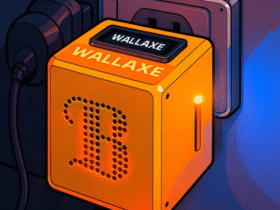Blocks processed by solo Bitcoin miners are appearing more and more. Or maybe they were always there and now, with better tracking tools, it’s simply easier to spot them.
The concrete thing is that this November 27, one of those miners processed block 925380 and obtained a reward of almost $290,000. That profit was provided by the block subsidy of 3.125 BTC plus 0.047 BTC ($4,280) in fees, as seen in the image below:


Details of the discovery of the lone Bitcoin miner
With Kolivas, administrator of Solo CKPool, a service that allows solo mining and was used by this miner, contributed feat data.
Around 700 TH/s to solve block 925380. A miner of this size has a 1 in 10,000 chance of finding a block per day.
With Kolivas, administrator Solo CKPool.
That is to say, that miner, at the time of finding the block, was contributing to the pool and the network. about 700 TH/s (terahashes per second) of computing power.
Additionally, the profile of the user within Solo CKPool shows that the operation has “5 workers”that is, five ASIC machines.
That suggests that These are five industrial equipment and not small devices such as Bitaxe or other mini ASICs, unlike other cases already documented by CriptoNoticias.
Tentatively, it can be considered that a performance of 700 TH/s distributed over five devices matches devices Bitmain. For example, Antminers S19j Pro or variants of the same series.
Each one is between 100 and 150 TH/s, depending on the configuration and state of use, which fits with the total volume registered in the pool.
Finally, this finding once again shows that, despite high global competition, solo mining and the decentralized spirit of Bitcoin They still allow small operators to find a block.
Even with older generation hardware or using mini ASIC.






Leave a Reply